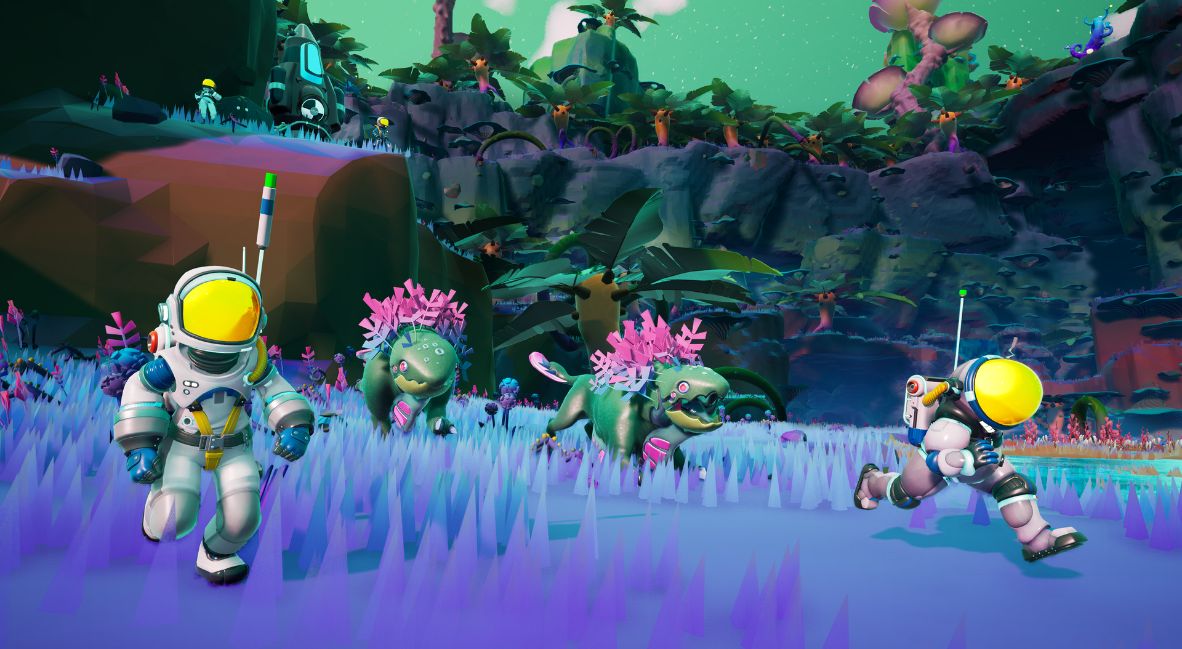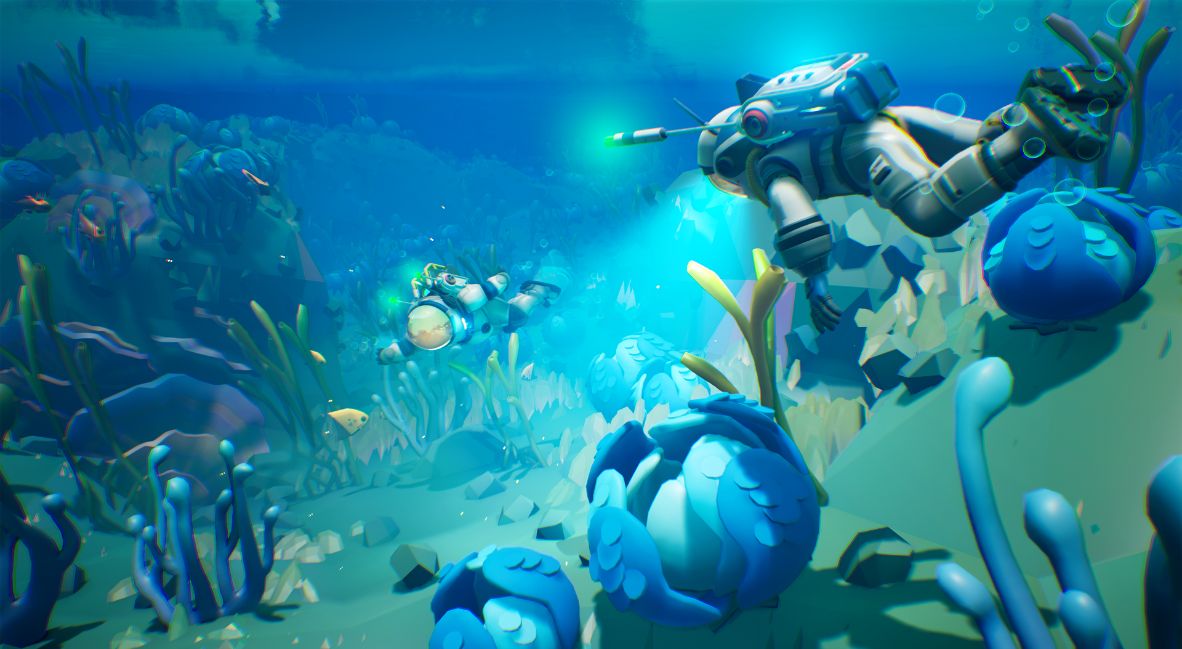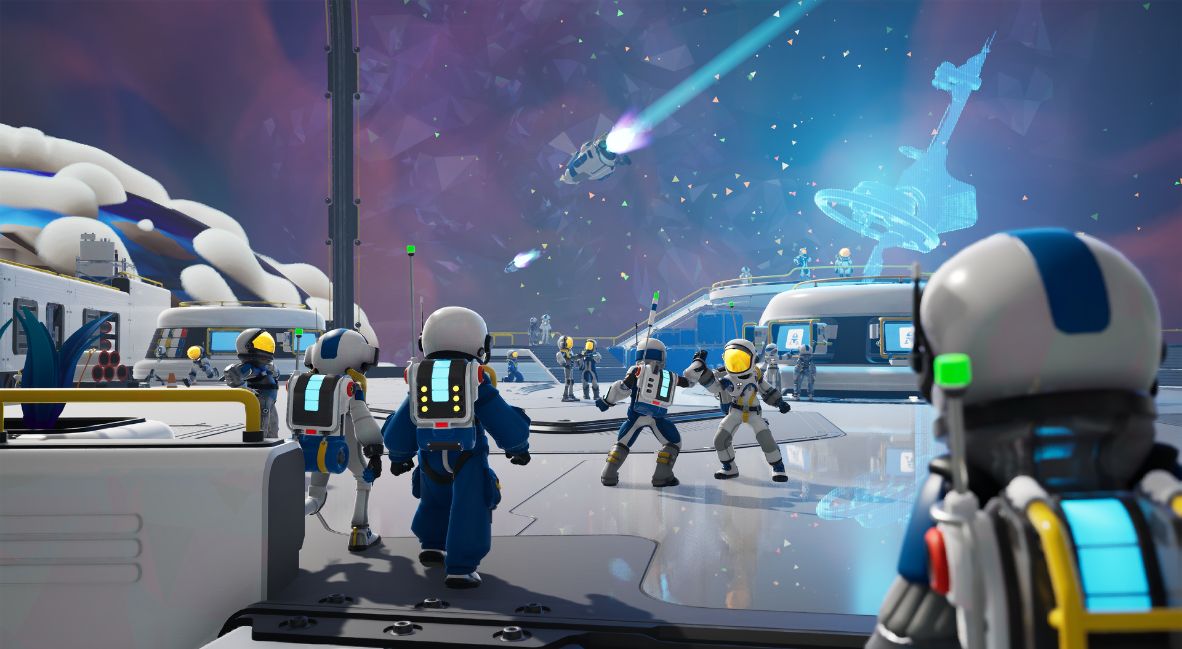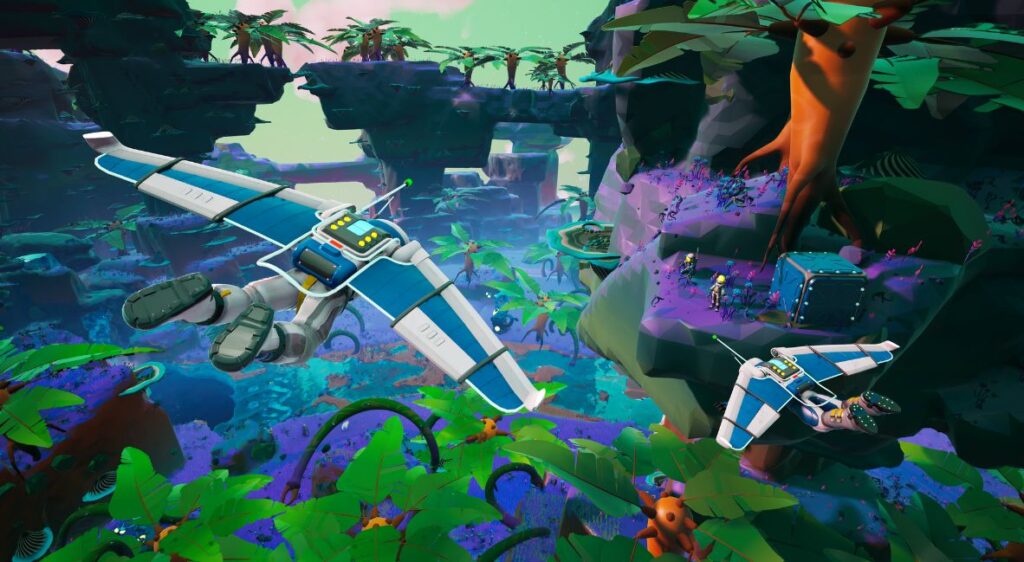Recently, developer System Era Softworks announced a pseudo-sequel to their survival adventure title, Astroneer. The new game, titled STARSEEKER Astroneer Expeditions, does away with the long-form crafting and base-building of the original game and instead opts to flesh out the exploration features. Additionally, the Devolver Digital-published game puts a focus on teamwork, allowing teams of four to venture out on missions in the name of discovery, science, and playful shenanigans. At PAX West, I had the opportunity to go hands-on with STARSEEKER Astroneer Expeditions, and what I learned has me excited to play more.
In this title’s most significant departure from the original Astroneer, players will not be stranded on an alien planet. Instead, they and other players will start their play sessions on the Starseeker, an orbital space station where they can socialize, accept missions, and learn about each other’s accomplishments. After selecting a mission, players will be sent to the planet’s surface to accomplish their assigned tasks.
While the full release promises to have multiple tools to choose from, my demo saw me equipped with a glider, a tool for stunning or knocking back other organisms (including other players), and, of course, the vacuum-like tool with which to shape the landscape. Other players in my group shared much of the same equipment, but instead of the knockback tool, they possessed a water hose-like tool, a lasso that can shock enemies, and a tool that allowed them to create swaths of land.
STARSEEKER Astroneer Expeditions achieves a familiar, alien aesthetic.

As soon as we touched down, I was greeted with a familiar sight. Though the planets in STARSEEKER Astroneer Expeditions aren’t procedurally generated, they’re still crafted with the soft, alien aesthetic of the planets in Astroneer. It generates an atmosphere that is mysterious and potentially scary, but not overly so. Once we reached the planet’s surface, we had orders to find and repair a previously established abb. Whether this lab was meant to be created in a previous mission or simply within the lore of the game is unknown.
We climbed, slid, and glided across the landscape to find our target, only to discover that the lab had suffered a cave-in and was now packed full of earth. Additionally, sections of the lab were coated in a goop that required the water hose tool to clean it up. STARSEEKER Astroneer Expeditions encourages players to find the tools they like for missions, meaning that occasionally, you may find yourself in a squad where nobody has a necessary tool.
This isn’t immediate grounds for failure, however, since plants are growing on the planet that create a splash of water when thrown. This also prevents a vital team member from keeping everyone waiting while they explore on their own, or from being eliminated by hostile flora and fauna.
Exploration allows players to interact with new creatures.

With the lab cleaned up, we tried to restart the equipment, only to find that a sensor array had gone missing. Our new task was to find the component and bring it to a high-up place on the map, prompting more exploration. Like Astroneer, your exploration is limited somewhat by an oxygen limit. Still, in STARSEEKER Astroneer Expeditions, this acts as more of a broad time limit for the mission versus the essential lifeline in the original title. Instead of running out of air within seconds, you’ll receive twenty to thirty minutes to complete your tasks, depending on the mission.
Oxygen isn’t the only thing threatening your life on these alien worlds. While STARSEEKER Astroneer Expeditions doesn’t feature a world teeming with hostile wildlife, you will find the occasional lifeform that requires you to defend yourself. Even in these cases, you have options on how to deal with your obstacles. The shockwave launcher I had equipped allowed me to stun the creature, eventually tranquilizing the beast.
At this point, we’re given the option to retrieve a sample from the creature, though the exact purpose of this function isn’t clear in our demo. Naturally, since the creature was defenseless, one member of our party used his electric lasso to kill the poor thing, causing it to disintegrate.
The Astroneer follow-up promises community-based adventure.

With that final obstacle out of the way, we were able to return to our landing pad and escape the planet, flying back up to the titular Starseeker. I didn’t get a look at the space station this time around, but one dev assured me it would serve as both a home base and a social space. A crew returning from a mission might be accompanied by fanfare, or a player reaching some kind of record may receive acknowledgment.
Further, player missions all contribute to the planet’s exploration, eventually allowing for more advanced expeditions to the planet’s surface. Depending on where the community focuses their exploration efforts, players can unlock different sections of the planet or various tools sooner. When a planet is completely explored, the Starseeker will fly to another planet, starting the process anew.
With the trademark Astroneer aesthetic, evolving quests, and community-wide efforts to explore alien planets, STARSEEKER Astroneer Expeditions can’t come soon enough. Although the title doesn’t have a release date yet, I can’t wait to jump in with a squad for some fun and silly expeditions.
STARSEEKER Astroneer Expeditions is coming soon.







